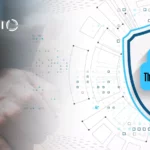In today’s world, protecting remote connections is more important than ever for maintaining the security and integrity of your network. With remote work becoming increasingly common, organizations face new challenges in safeguarding sensitive data, ensuring compliance, and preventing unauthorized access. Every connection outside the corporate environment represents a potential entry point for cyberattacks, making protecting remote connections a top priority for IT teams.
Why Protecting Remote Connections Matters
The shift to remote work, accelerated during the 2020 pandemic, has exposed organizations to unprecedented security risks. Industries that traditionally avoided remote work, such as banking, finance, and healthcare, were suddenly forced to adapt. Many organizations had to quickly deploy temporary solutions, often without fully considering long-term security implications.
Relying on short-term fixes, trial software, or free tools is no longer enough. Cyber attackers continue to evolve, exploiting gaps in network defenses and unprotected endpoints. Organizations that fail at protecting remote connections risk not only data breaches but also operational disruption, financial loss, and reputational damage.
Effective remote connection protection requires a combination of technology, policy, and user awareness. Companies must proactively address vulnerabilities, enforce security protocols, and adopt solutions that scale with remote operations over the long term.
Key Vulnerabilities
When securing remote connections, organizations must focus on monitoring devices, connections, and user activity. The ideal scenario is a COBO (Corporate-Owned, Business Only) workflow, where employees use company-provided laptops for remote work. This allows IT teams to enforce security policies and monitor corporate devices, regardless of their geographic location.
When COBO is not feasible, organizations must at minimum model potential threats, define security policies, and implement automated mechanisms to enforce them.
Securing BYOD: Mitigating Risks and Protecting Remote Connections
In many organizations, the Bring Your Own Device (BYOD) model is increasingly common. This approach, while convenient, raises additional risks for protecting remote connections. IT security officers often lack visibility into the devices employees use, which can lead to vulnerabilities in the corporate network.
Obviously, the minimum necessary measure to ensure a secure user session within BYOD should be to protect the device’s connection to the corporate network using a VPN (BYOD security risks). However, the VPN does not solve the original problem of connecting an unverified and potentially rogue device to the network. For instance, such a device could be a child’s gaming PC. The antivirus database on this PC might not have been updated, or there might be no antivirus software installed at all because there’s no valuable information on the device. Consequently, this computer could already harbor several pieces of malicious software, even if it’s a relatively secure Apple device. This situation makes it a potential entry point for hackers.
Smart BYOD Protection with NAC
To effectively minimize various BYOD risks, organizations can use Network Access Control (NAC) within their information security infrastructure. All major manufacturers, including Cisco, Microsoft, and Symantec, now offer this software. These systems specifically facilitate the transition of business processes to the BYOD model. At some point, customers began to redesign them for new tasks, such as the Internet of Things. As a result, although the majority of companies have implemented the so-called AAA processes (authentication, authorization, and audit) related to information security, not many organizations still use proper tools to monitor devices’ security profiles.
In the current situation, IT security teams should fully utilize their network access control systems. NAC offers mechanisms for monitoring and verifying devices attempting to access the corporate network. It checks compliance with security policies. If a device is found to be non-compliant, the system will automatically initiate procedures to normalize access parameters. These procedures align with information security requirements. If such a procedure is not possible, then NAC will block access to the corporate network for this device.
Protecting Remote Connections: Access Control and Integration Strategies
Another option is also possible: a device that does not fully comply with information security policies will receive limited access to the network. For example, to isolated areas that do not contain critical information. Indeed, to achieve this, you must segment the corporate network by departments or access levels. You can achieve this using traditional approaches, such as virtual networks (VLANs) and Active Directory data. Alternatively, organizations can utilize software-defined methods, like Cisco TrustSec technology.
It is important to ensure that a NAC solution can fully integrate with the existing IT environment. This verification process can be labor-intensive. If done incorrectly, you may not achieve the desired efficiency from the NAC due to functional limitations. To implement effective network access control systems, it is advisable to engage specialized companies. These companies should have the necessary qualifications and experience in information security.
Additional Security Measures
In addition to NAC, organizations may also pay attention to other solutions aimed at controlling user actions. These are Mobile Device Management (MDM) and Data Leak Prevention (DLP) systems. MDM allows you to ensure the safety and security of portable devices of remote users. For example, by preventing data loss during the theft of a smartphone, tablet, or laptop. In turn, DLP systems enable organizations to analyze the behavior of their employees. You can use them to track where confidential information is sent and whether users are violating information exchange rules. They also enable you to analyze how employees spend their working time. While these may not be the primary focus, they provide an additional layer of security. This contributes to a comprehensive approach to protecting remote connections.
The Sepio Platform Advantage
Alongside NAC, a new domain has risen. Sepio platform for network visibility and asset risk management (ARM). The ability to have ultimate visibility, policy enforcement capabilities and Rogue Device Mitigation with regards to the Enterprises Hardware assets. This new domain complements the NAC functionality on the Network domain and EPS on the device domain.
And, of course, technical procedures will be most effective only when organizations support them with specific actions. Managers should consider:
- Introducing internal corporate regulations and instructions for working remotely.
- Signing up additional agreements with employees on the use of confidential information.
- Carrying out general measures to clarify responsibility when working with corporate networks, services, and data outside the office.
- Conducting security awareness training.
An integrated approach is essential for building a safe remote work model. Meticulous consideration of all details is also crucial. This strategy enables organizations to create a secure environment not just for the short term, but also for the long term.
Contributed by: David Balaban
See every known and shadow asset. Prioritize and mitigate risks.
Talk to an expert to learn how Sepio’s patented technology can help strengthen your efforts in protecting remote connections.




